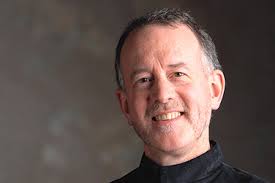[contextly_auto_sidebar id=”RXfE9O9GJVymPgMcaUmQBAuCEx5vzm9P”]
In my last post, I raved about the incredible University of Maryland performance of Appalachian Spring, with the musicians playing from memory and dancing, a sequel to the student orchestra’s similar performance of Afternoon of a Faun two years ago.
But performances like these don’t happen on some sudden whim. They have a history. They grow from some serious thinking about what classical music should be, and about what classical music students should be taught.
And in this case we know what the thinking is, because Jim Ross and Mike Votta — who conduct the two symphonic ensembles at the university, the symphony orchestra and the wind orchestra, have written a stunning manifesto, which was printed in the program book for the Appalachian Spring performance.
Here it is. I think every word is golden. What a deeply thoughtful philosophy of music, education, and of life! I’d love to see what readers think of this. And to hear from people who’ve put similar thoughts into practice.
I’m reminded here of the piano curriculum at Wilfrid Laurier University in Canada, which I blogged about two years ago. I may have put other things like it on my blog, without remembering them just now. But I know there are people all over the world thinking in these new ways. And doing wonderful things. Let’s hear about them!
Here’s the Maryland document:
The UMD SYMPHONY ORCHESTRA and UMD WIND ORCHESTRA are led with a shared vision based on the following bedrock principles which influence every aspect of our large ensemble program including what we play, why we rehearse, how we define the symbiotic roles of conductor and player, and how we give concerts:
1. We believe there is no difference between playing chamber music, playing in orchestra, and playing in an ensemble of winds except the number of people around you. Musicmaking in all ensemble settings requires the same essential skills of active listening and co-shaping that characterizes great chamber musicmaking. We believe in leading while following and following while leading — not just for our players but also for ourselves as leaders of players.
2. We believe in the conductorless large ensemble experience.
3. We believe in encouraging active verbal input from players throughout the rehearsal process and in soliciting their ideas for programming future seasons.
4. We believe in mixing the skill levels of our players for maximum educational benefits, and in the primacy of process — i.e. that good rehearsals are their own reward.

Mike Votta
5. We believe that every concert must be a simultaneous celebration of the past and of the future.
6. We believe in our New Lights initiative, which asks questions like: What is a concert that people should want to come to it? What is it about the ritual of concerts that may keep people from wanting to come? How can we enhance the impact of the music we play? What forms might concerts take 50 years from now? What is good music of any genre — and why does music of different genres so rarely appear together on concerts? Beyond playing the notes well, what might be asked of young musicians to help build the kind of musical life they would want to inhabit? Our concerts are our attempts at responses to these kinds of questions and the result of putting these bedrock beliefs into action.
James Ross, Director of Orchestral Activities
Michael Votta Jr., Director of Wind Activities
And now a word about the Wind Orchestra. It gets less outside attention, I fear, than the Symphony Orchestra does, and while I can see how that happens — the Symphony Orchestra does those incredible dancing performances, for a start — it’s not completely fair. The Wind Orchestra is pretty wonderful. It does almost exclusively new music, and does it well, with well-done visual enhancements. Its last concert, a few days before the Symphony Orchestra concert I blogged about, also featured the danced Appalachian Spring, giving the symphony players another chance to do it.
But here’s the rest of the program:
Magnus Lindberg, Gran Duo
Bruce Yurko, Dialogues and Fanfares II for Wind Orchestra
Steve Reich, Tehillim
Good to see. The one Wind Orchestra concert I’ve heard, a few years ago, had music by Lutoslawski and Gubaidulina. (Which makes it odd that the Wind Orchestra’s web page, which I linked to above, has links to performances of Reynaldo Hahn, very well played, but not their typical repertoire.)
About Appalachian Spring: Soon enough there’ll be a video, which I hope will be as widely watched as the Debussy video has been.
If you Google “university of maryland appalachian spring,” you’ll find several photos of the performance. (Don’t try it with Bing. Most of the photos don’t show up.)


Excellent! The only thing I would add is the word “present” to No. 5. Heaven knows we’ve got the past covered, and have also suffered through plenty of music supposedly destined for future immortality but incomprehensible to those actually in attendance. Here’s to the here and now!